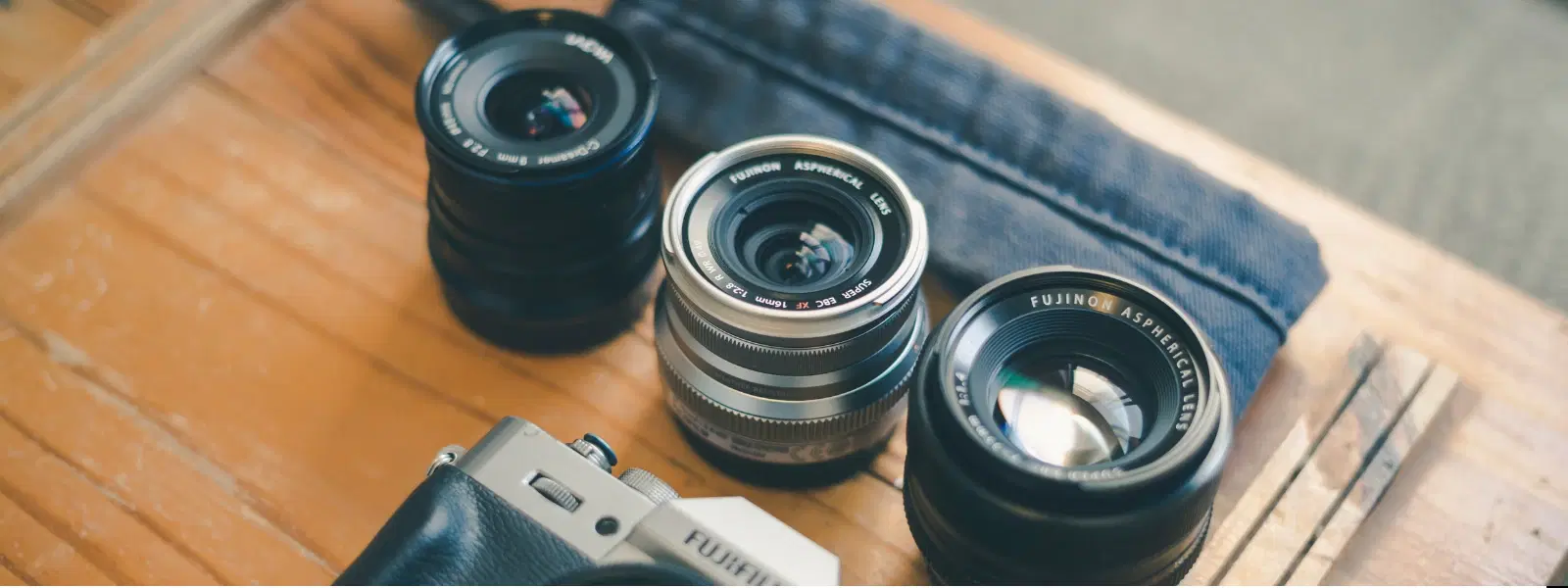
Consumer Electronics
•05 min read
Choosing the right lens can transform your photography from ordinary to extraordinary. Whether you’re a passionate beginner or a seasoned professional, understanding different types of camera lenses helps capture that perfect moment. From DSLR to mirrorless systems, this guide will walk you through the 10 must-know lens types, and how shopping on Tata Neu and Croma can reward you with NeuCoins and exciting benefits such as express delivery (check availability for orders placed before 6 PM).
Standard lenses offer a natural perspective with focal lengths that closely match the human eye. Their versatility makes them ideal for everyday photography, including portraits and street photography. With a natural balance of clarity and ease of use, these lenses are great for capturing life’s spontaneous moments.
Known for fixed focal lengths and wider apertures, prime lenses excel in low light and produce sharp images with beautiful bokeh. Their simplicity makes them popular for artistic portraits and close-up shots, offering superior quality without the distraction of heavy zoom mechanisms.
Zoom lenses provide flexibility by covering a range of focal lengths in one package. Ideal for events or dynamic shoots, they allow you to adjust your composition on the fly without switching lenses. This versatility is particularly useful for travel photography where changing conditions are the norm.
Wide-Angle Lenses: Perfect for landscapes and architectural photography, wide-angle lenses capture expansive scenes with dramatic depth and perspective. They are excellent for cramped spaces where a broader view is needed.
Telephoto Lenses: Designed to capture distant subjects, telephoto lenses are indispensable for wildlife and sports photography. They compress the background and foreground, enabling you to focus on details without intruding on your subject’s space.
Macro Lenses: For those who love details, macro lenses allow extreme close-ups of flowers, insects, and textures, revealing a world often overlooked by the naked eye.
Fisheye Lenses: Introducing a creative twist, fisheye lenses offer an ultra-wide, curved perspective that transforms everyday scenes into unique and playful images. They are an excellent choice for experimental photography.
Tilt-Shift Lenses: These specialised lenses give photographers advanced control over focus and perspective. Highly valued in architectural and product photography, they help maintain straight lines and correct distortion.
Superzoom Lenses: Combining a wide range of focal lengths, superzoom lenses are convenient for on-the-go photography, letting you capture everything from sweeping vistas to tight close-ups without changing equipment frequently.
Kit Lenses: Often included with camera packages, kit lenses provide a balance of performance and affordability. They are an excellent choice for beginners looking to learn the basics without a steep investment.
Choosing the Right Lens: Assess your photography style and typical shooting conditions. Whether it’s the low-light performance of a prime lens or the flexibility of a zoom lens, align your choice to your creative needs.
Lens Maintenance: Regular cleaning using a microfiber cloth and proper storage in a padded case can prolong the life of your lenses. This care is essential to maintain the sharpness and clarity needed for high-quality images.
Maximising Performance: Experiment with aperture settings, focal lengths, and shooting techniques to fully exploit your lens capabilities. Practice not only refines technique but also helps you find your personal style.
The standard lens is versatile and closely matches the field of view of the human eye, making it ideal for everyday shooting.
Prime lenses offer excellent image quality and low-light performance with fixed focal lengths, while zoom lenses provide operational flexibility by allowing a range of focal lengths in one.
Wide-angle lenses are generally preferred for landscapes as they capture broader scenes and offer dramatic perspectives.
Absolutely. Kit lenses strike a balance between performance and affordability, making them a great starting point for learning the fundamentals of photography.
Consistent maintenance, including cleaning with appropriate tools and careful storage, is key. Always follow manufacturer instructions to ensure longevity.
Yes, shopping on Tata Neu and at Croma lets you earn up to 5% NeuCoins with every purchase. Plus, you can use your NeuCoins to shop across a variety of trusted brands seamlessly.
Understanding the range of camera lenses available empowers you to enhance your photography skills and capture images that tell a story. From standard to specialised lenses, each type offers distinct benefits that cater to various creative needs. Pair your passion with the added advantages of shopping on Tata Neu and Croma, where expert guidance, express delivery, and NeuCoins rewards make every purchase rewarding. Happy shooting!